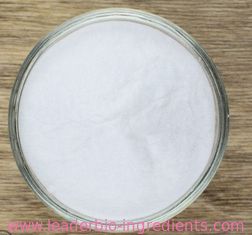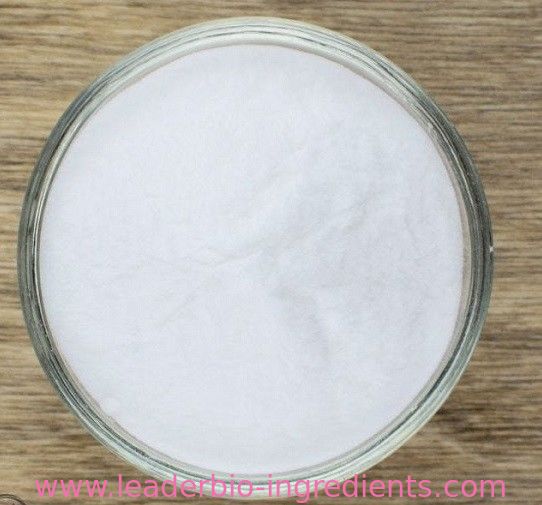| Description |
Phenylalanie is an essential amino acid and it is the precursor of the amino acid tyrosine. The body cannot make phenylalanie but it needs phenylalanie to produce proteins. Thus, human needs to obtain phenylalanie from food. 3 forms of phenylalanie are found in the nature: D-phenylalanine, L-phenylalanine, and DL-phenylalanine. Among these three forms, L-phenylalanine is the natural form found in most foods that containing proteins, including beef, poultry, pork, fish, milk, yogurt, eggs, cheeses, soy products, and certain nuts and seeds. The form of phenylalanine determines its application. It is suggested that L-phenylalanine can strengthen the effect of UVA radiation for people with vitiligo, in which L-phenylalanine may lead to darkening or repigmentation of the white patches, particularly on the face. The neurotransmitters L-phenylalanine affects help reduce hunger, improve memory, lessen the symptoms of ADHD and Parkinson's disease, and ease chronic pain, according to the UMMC research. Thus, L-phenylalanine is used in the manufacture of food and drink products and sold as a nutritional supplement for its reputed analgesic and antidepressant effects. L-phenylalanine is also suggested as an intermediate for anti-cancer drugs. A few small studies showed promise using L-Phenylalanine to manage alcohol withdrawal and ease PMS symptoms. It is also used in artificial sweeteners such as aspartame. |
| References |
[1] http://www.umm.edu/health/medical/altmed/supplement/phenylalanine
[2] Xueqin Song , Philip L. Lorenzi , Christopher P. Landowski , Balvinder S. Vig , John M. Hilfinger , Gordon L. Amidon (2005) Amino Acid Ester Prodrugs of the Anticancer Agent Gemcitabine:? Synthesis, Bioconversion, Metabolic Bioevasion, and hPEPT1-Mediated Transport, 2, 157-167. |
| Chemical Properties |
L-Phenylalanine has no odor and a slight bitter taste. It melts with decomposition at about 283°C. The pH of a 1 in 100 solution is between 5.4 and 6.0. FEMA notes this chemical is used in a substitute only. |
| Chemical Properties |
White crystalline powder |
| Occurrence |
Reported found in white bread, macaroni, egg noodles, corn flakes, corn grits, oatmeal, wheat bran, wheat flakes, shredded wheat, barley, brown rice, rye flour, whole grain wheat flour, buttermilk, blue cheese, cheddar cheese, cottage cheese, cream cheese, parmesan cheese, bacon, cured ham, frankfurters, pork sausage, canned red kidney beans, canned sweet corn, canned peas, canned lima beans, canned potatoes, canned asparagus, canned snap beans, canned beets, beef, lamb, fresh ham, veal round, beef liver, chicken, chicken liver, turkey and other natural sources. |
| Uses |
phenylalanine is a conditioning agent with greater application in hair care than in skin care preparations. It is also used in suntan products. |
| Uses |
L-Phenylalanine is an essential amino acid. L-Phenylalanine is biologically converted into L-tyrosine, another one of the DNA-encoded amino acids, which in turn is converted to L-DOPA and further conv erted into dopamine, norepinephrine, and epinephrine. L-Phenylalanine is produced for medical, feed, and nutritional applications such as in the preparation of Aspartame. |
| Uses |
L-phenylalanine is an amino acid used as a skin-conditioning agent. It has greater use in hair care than in skin care products. |
| Definition |
ChEBI: The L-enantiomer of phenylalanine. |
| Preparation |
From PTS-negative Escherichia coli bioengineered strains. |
| Synthesis Reference(s) |
Canadian Journal of Chemistry, 29, p. 427, 1951 DOI: 10.1139/v51-051
The Journal of Organic Chemistry, 30, p. 3414, 1965 DOI: 10.1021/jo01021a035
Tetrahedron Letters, 26, p. 2449, 1985 DOI: 10.1016/S0040-4039(00)94850-0 |
| General Description |
Odorless white crystalline powder. Slightly bitter taste. pH (1% aqueous solution) 5.4 to 6. |
| Air & Water Reactions |
Water soluble. Aqueous solutions are weak acids. |
| Reactivity Profile |
L-Phenylalanine may be light sensitive. Act as weak acids in solution. |
| Health Hazard |
ACUTE/CHRONIC HAZARDS: When heated to decomposition L-Phenylalanine emits toxic fumes of nitrogen oxides. |
| Fire Hazard |
Flash point data for L-Phenylalanine are not available; however, L-Phenylalanine is probably combustible. |
| Safety Profile |
Mildly toxic by intraperitoneal route. An experimental teratogen. Experimental reproductive effects. Human mutation data reported. When heated to decomposition it emits toxic fumes of NOx. |
| Purification Methods |
Likely impurities are leucine, valine, methionine and tyrosine. Crystallise L-phenylalanine from water by adding 4volumes of EtOH. Dry it in vacuo over P2O5. Also crystallise it from saturated refluxing aqueous solutions at neutral pH, or 1:1 (v/v) EtOH/water solution, or conc HCl. It sublimes at 176-184o/0.3mm with 98.7% recovery and unracemised [Gross & Gradsky J Am Chem Soc 77 1678 1955]. [Greenstein & Winitz The Chemistry of the Amino Acids J. Wiley, Vol 3 pp 2156-2175 1961, Beilstein 14 IV 1552.] |

